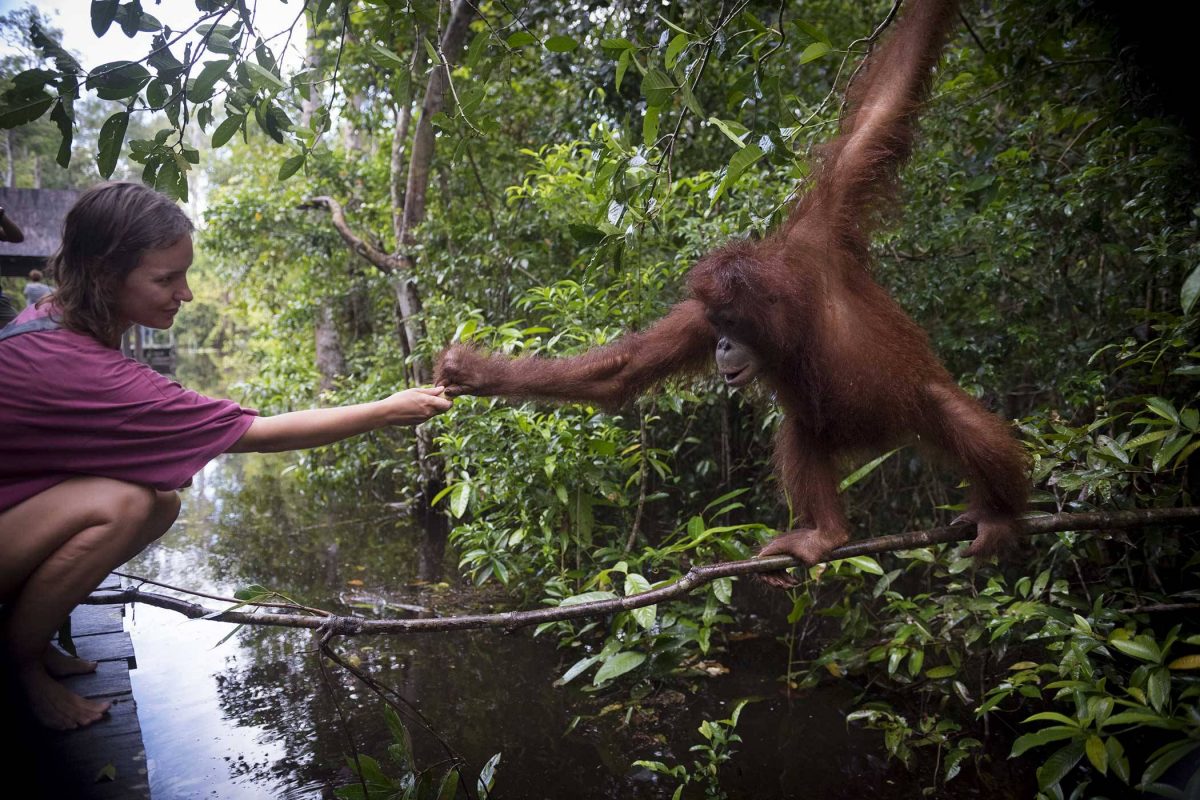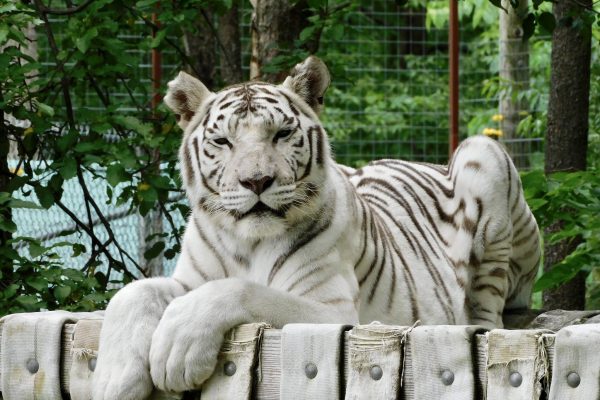
Animal and wildlife tourism can promote education, conservation, and local economic growth. However, many animal tourism experiences can put an animal’s health and welfare at risk. Unsafe conditions for animal tourism encounters can also be dangerous to the people visiting!
Black Pine Animal Sanctuary is an accredited sanctuary. That means we don’t support any activities or environments that force animals to exhibit unnatural behaviors. Photo ops, tiger cub petting, elephants having their nails painted, and more can be extremely dangerous to both the animals and people involved.
Wanting to interact with animals and learn more about their environment is a wonderful thing. So let’s talk about how you can safely do that in a way that benefits both you and the animals you interact with.
The Dangers Of Animal Tourism
A recent report by the World Wildlife Foundation (WWF) states that “there has been a 68% average decline of birds, amphibians, mammals, fish, and reptiles since 1970”.
This statistic is important because many animals end up in zoos, sanctuaries, or parks around the world because of it. As the population of certain animals decline, they become more popular as tourist attractions.
There are a variety of reasons animal tourism can be dangerous or harmful.
Mistreatment Of Animals
This is the main concern we should all have when considering animal tourism. According to World Animal Protection, more than 250,000 wild animals are used for tourist entertainment at any given time.
Infant animals are often taken from their mothers, subjected to pain to control their behavior and prevented from developing social interactions with their own species.
When animals are pushed to perform “tricks”, they are often chased, physically abused, and kept isolated which leads to psychological abuse.
Increased Possibility Of Extinction
When animals are captured for use in wildlife tourism scenarios, that means they’ve been removed from their natural habitat. Often the most popular animals for tourists to see are endangered species.
Once these animals have been captured and trained to perform for audiences and interact with people, they can no longer be safely released back into the wild. They wouldn’t survive on their own.
How To Ethically Experience Wildlife
While animal tourism is dangerous and often unethical, there are still ways to support and interact with wildlife!
When you’re planning your vacation or travel experience, follow these general guidelines when considering any attraction or situation involving wild animals:
- Does this sanctuary or conservation park put the welfare of animals first?
- Are animals pressured to perform tricks and shows?
- Does the park breed animals in captivity for their own performances?
- What happens to the animals if they don’t want to interact with tourists?
- Are animals cared for in an environment as close to their natural habitat as possible?
If these parks and sanctuaries include animal shows, photo opportunities, petting, and handling exhibitions or rides, consider looking elsewhere.
If you have concerns or questions about how animals are treated and cared for in a sanctuary or conservation park you want to visit, checking out their website or calling and asking specific questions is a great way to get good information.
Zoos, Sanctuaries, and Conservation Parks
While there are unethical versions of all three of these options, many are dedicated to the ethical and safe treatment of animals under their care.
Zoos
While “roadside” and non-accredited zoos would fall under unethical animal tourism, many accredited zoos are a great way to experience wildlife. We have several reputable zoos in our area here in Northern Indiana, including the Fort Wayne Children’s Zoo, the Potawatomi Zoo and the Indianapolis Zoo.
Before you visit a zoo, check to see if they are accredited by the Association of Zoos and Aquariums.
Animal Sanctuaries
At sanctuaries like ours, the animals who live there have found a forever home. They have either been confiscated by legal authorities or surrendered to the sanctuary. Our goal is to ensure the animals under our care are able to live peacefully.
Unlike unethical animal tourism attractions, we don’t capture animals from the wild. Instead, we care for animals that can’t survive in their natural habitats.
Conservation Parks
If you do plan to visit a wildlife park, be sure to research it thoroughly to ensure the animals are being properly cared for. We recommend only visiting wildlife parks that are involved in conservation, not ones that put animals on display to perform or pet.
Plan Your Visit To Black Pine Animal Sanctuary
We’re the forever home of over 100 exotic and wild animals and are accredited by the Global Federation of Animal Sanctuaries. Our sanctuary has over a half-mile of paved trails winding through a wooded area with a variety of habitats for foxes, tigers, wolves, bobcats, leopards, and bears.
We also have indoor habitats created to house reptiles, primates, and birds. We are open for staff-guided tours of the sanctuary May 8 – October (weather permitting) Thursday – Sunday.
You can always be sure that our animals are treated ethically and keeping them and visitors safe is our #1 priority.






